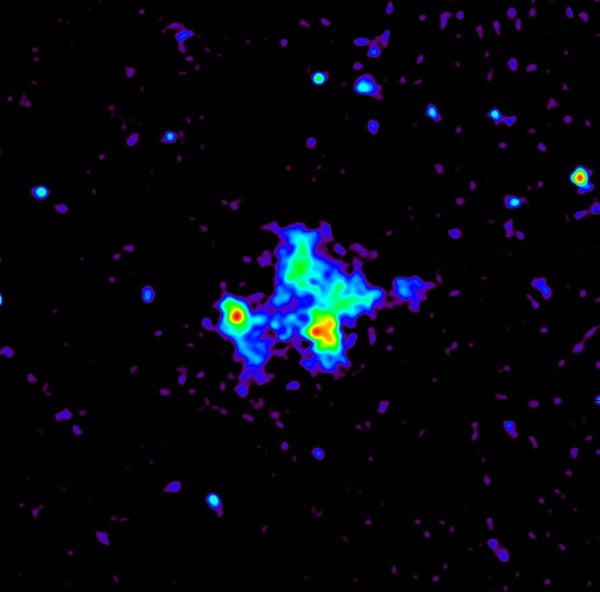LOFAR has made the first images of Abell 2256 in the frequency range of 20 to 60 mega Hertz (MHz). What came as a surprise to scientists was that the cluster of galaxies was brighter and more complex than expected. “We think that galaxy clusters form by mergers and collisions of smaller clusters,” said van Weeren. Abell 2256 is a prime example of a cluster that is currently undergoing a collision. The radio emission is produced by tiny elementary particles that move nearly at the speed of light. With LOFAR, it is possible to study how these particles get accelerated to such speeds. “In particular, we will learn how this acceleration takes place in regions measuring more than 10 million light-years across,” said Gianfranco Brunetti from IRA-INAF in Bologna, Italy, who, together with Marcus Brüggen from the Jacobs University in Bremen, coordinates the LOFAR work on galaxy clusters.
LOFAR was built by a large international consortium led by the Netherlands that includes Germany, France, the United Kingdom, and Sweden. One of the main goals of LOFAR is to survey the entire northern sky at low radio frequencies, with a sensitivity and resolution about 100 times better than what has been previously done. Scientists believe that this survey will discover more than 100 million objects in the distant universe. “Soon, we will start our systematic surveys of the sky that will lead to great discoveries,” said Huub Röttgering from Leiden University.










